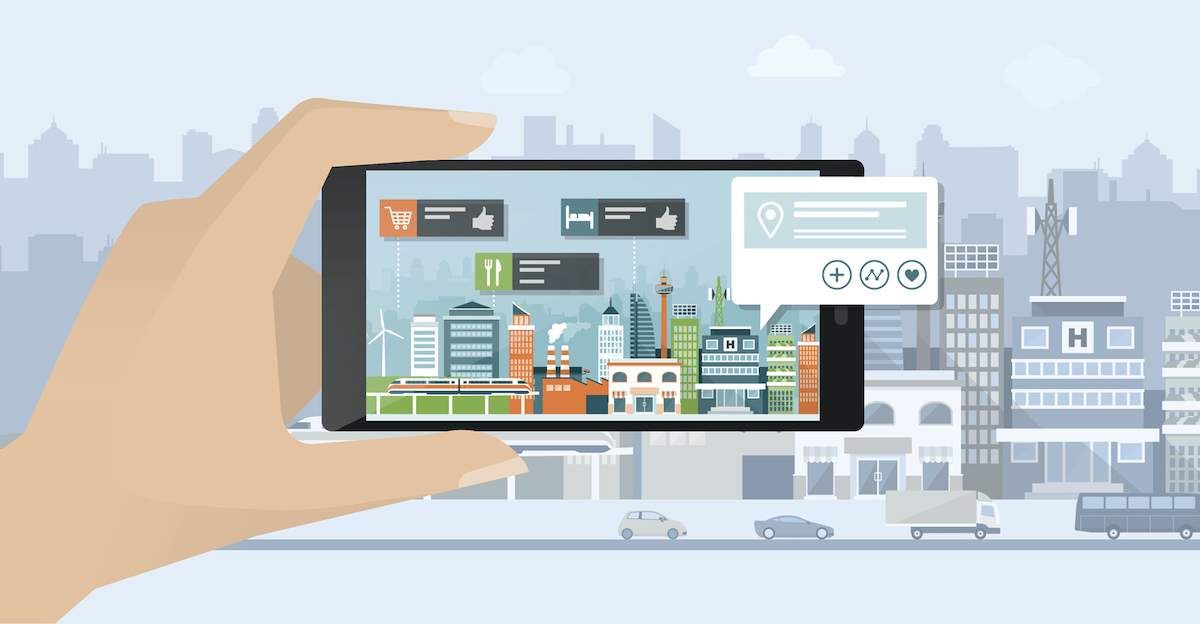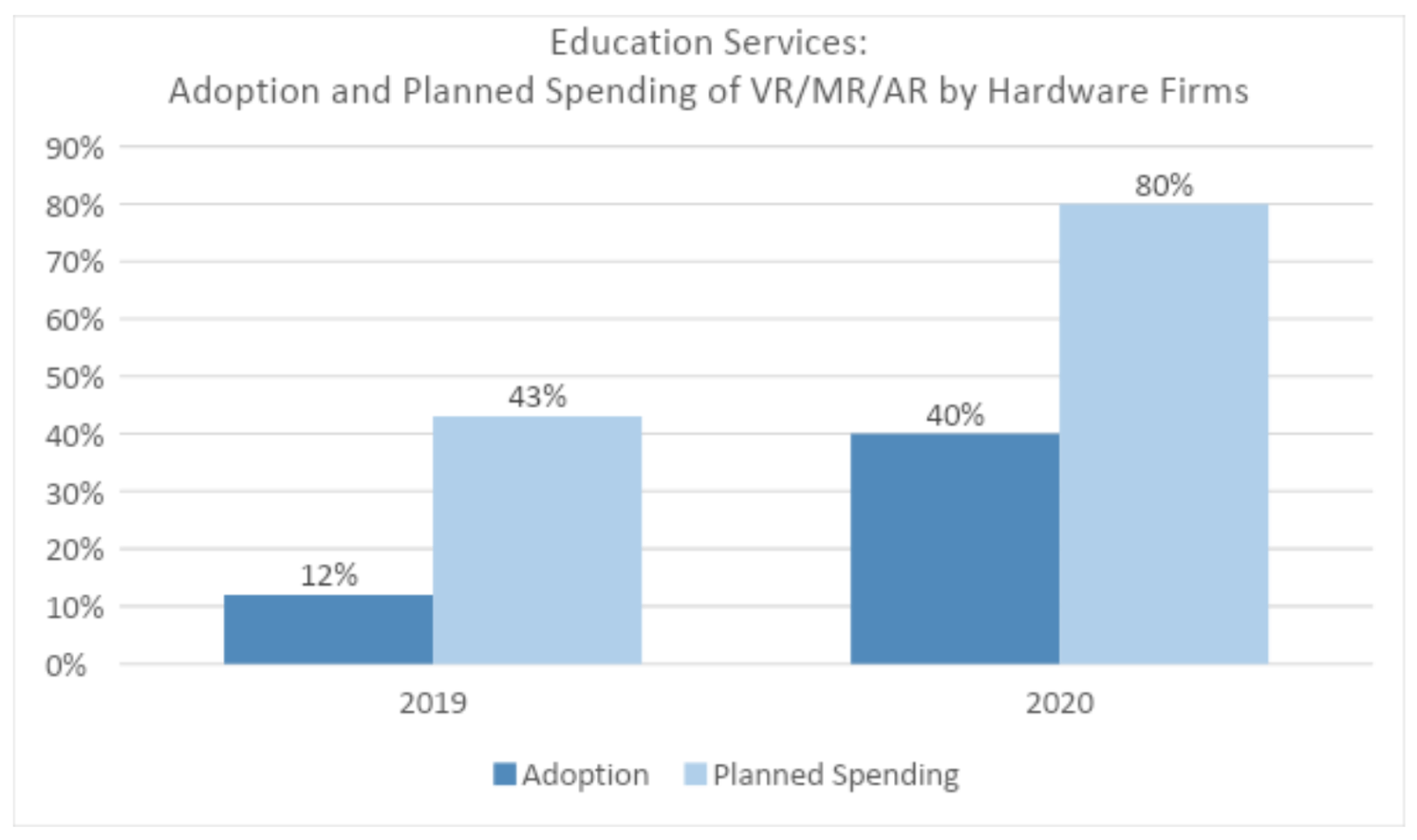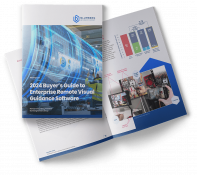Help Lightning Blog
Expanding Use Cases for Augmented Reality Technology

Today, the blog features a guest post on augmented reality technology from John Ragsdale, VP Technology Research at TSIA.
Over the last year, accelerated by the pandemic, technology companies are transforming the way they engage with customers. With in-person interaction off the table, our industry accelerated investment in technologies that could replicate an in-person experience. And in some ways improve the effectiveness of these engagements.
One virtual engagement technology that showed success with early adopters pre-pandemic was augmented reality (AR). Pacesetters were leveraging this technology to boost field service effectiveness. When face-to-face meetings were suddenly no longer an option, not only did more companies invest in augmented reality, but use cases for introducing AR capabilities began expanding across the enterprise. This blog gives an overview of AR. It also provides examples of how the technology can be used by various customer-facing departments.
Let’s start with a definition.
According to Wikipedia:
“Augmented reality is an interactive experience of a real-world environment in which the objects that reside in the real world are enhanced by computer-generated perceptual information.”
I first saw AR introduced for technical support and field service operations about five years ago. Early examples included the ability to leverage the camera of a mobile device to look into a customer’s home or office to inspect equipment, and then walk them through procedures such as troubleshooting or replacing a part. The AR technology allowed the technician to draw a circle around a button or a piece of equipment on the display, or draw an arrow pointing to a control, and when the customer moved their camera, the drawing stayed in place. This meant the customer could move around the equipment without losing the context of the button they needed to push, or the handle to release the part being replaced.
Augmented reality, also referred to as mixed reality, has come a long way since drawing a circle on a camera feed. Today’s AR tools can merge a video on top of an image. Such as demonstrating how to replace a part. So the camera view walks a customer step-by-step through a procedure. All while broadcasting the live images back to the support or field tech so they can monitor progress and coach the user through the process. More advanced capabilities are available using special equipment, such as purpose-built tablets or glass-like devices.
Before the pandemic, adoption of this technology was fairly low, and primarily used for two use cases:
- Remotely walking customers through a process. This was very helpful in more accurately diagnosing problems before dispatching a field tech. Or ideally, allowing the customer to perform a recovery procedure or replace a part, avoiding a field visit altogether.
- Field tech coaching. Another reason companies initially invested in this technology? In response to a retiring field service workforce. And the inability to find new employees with the same skills and experience as the mature workers. Leveraging remote video and augmented reality, a small team of seasoned experts in corporate could walk novice field techs through complex problem diagnostics and repairs with minimal training, dramatically reducing the cost of field service delivery.
COVID-19 accelerated adoption of AR by technology firms for use by support and field techs. Additional use cases are making AR a “must have” technology for multiple customer facing roles, in particular for hardware manufacturers.
TSIA and Help Lightning are both seeing AR in active use in multiple departments, as follows:
- Education Services. Multiple TSIA members have presented at our recent TSIA Interact conferences about how they were able to effectively train customers virtually, leveraging augmented reality. For hardware companies, customers would historically have traveled to a training center with classes taking place in labs filled with hardware. Leveraging AR, the same level of learning can take place, with instructors demonstrating how to use equipment, and students receiving contextual coaching for the equipment in their own IT environments.
- Customer Success. While customer success may not do the “heavy lifting” of technical training for system administrators, they do perform onboarding for customer end users, and for many firms, ongoing coaching and training by customer success is a revenue generating activity. Adding AR into the onboarding process allows more immersive training. This allows users to actually “experience” how to work with technology in a richer way. Not just watching a video or taking an online tutorial.
- Sales. Demonstrating equipment to technology buyers is a challenge for sales organizations. And at some point in the sales cycle, prospects typically needed to fly to a corporate visitors center for a hands-on demonstration. Using augmented reality, sales reps can allow prospects to fully experience technology and interact with it, all virtually.
Impact Of The Pandemic On Adoption
Data on enterprise-wide adoption of augmented reality is still being collected. And in the meantime here is some insight for Education Services, the team that owns customer learning within technology firms. As seen in this chart, adoption of virtual, merged, and augmented reality by education services teams within hardware firms significantly increased as a result of the pandemic.

In 2019, only 12% of hardware firms used technology for virtual/merged/augmented reality. 43% said they had budget for this technology in the next one to two years. Then COVID-19 hit, and companies had to pivot very quickly. According to TSIA’s Education Services Benchmark, 61% of the revenue from Education Services comes from in-person classroom training. This is usually done at the manufacturer’s office or onsite at the customer facility.
In order to continue conducting these for-fee classes in a virtual environment, many companies turned to augmented reality. And, by the time I conducted my 2020 Tech Stack surveys late last summer, adoption by hardware firms had grown to 43%, with 80% planning an investment. The 2021 Tech Stack Surveys are now live. Early results show that adoption by hardware companies may have doubled, or more. I will be writing a research report on this topic later this year. In it I will include the 2021 adoption and planned spending numbers to show how the pandemic has driven adoption of this technology.
Interested in doing an investment in augmented reality? Here are some recommendations:
- Land and expand. Most of the case studies today are in the Technical Support, Field Service, and Education Services domains. Identify a department that not only needs the technology to solve business challenges, but is open to transformation. Once you have proven success in one department, it makes it much easier to increase the footprint. You can then expand the technology to additional groups or geographies.
- Focus on business value. There are a lot of great case studies out there showing AR has dramatically improved resolution time for technical support issues, eliminated truck rolls for field service, and enabled customer learning teams to continue for-fee classes using a 100% virtual model. Build the business case to understand the potential ROI, which will make pushing for budget much easier.
- Buy out of box technology. Just like advanced artificial intelligence (AI), augmented reality is not something you want to build from scratch. Unless it is already a core competency of your company. Look for providers who have the technology as well as the know-how to make you successful. This includes helping you develop the merged reality concepts and put them into use. If you try to do all of this in house, it will take you much longer to have a usable solution.
Looking for more information?
For more information on this topic, view the on demand webinar I presented with TSIA partner Help Lightning, “Exponential Impact: Exploring Enterprise-Wide Use for Remote Assistance Software.” Also, stay tuned for the research report I will be co-authoring later this year with my peer, Karolin DiCristina, Member Success Director, which will go into more detail on the use cases included in this blog, as well as discuss the common roadblocks to implementing VR/AR/MR, and how to overcome them.
Help Lightning note: Looking for other expansion use cases? how about this one to increase car dealer sales?












